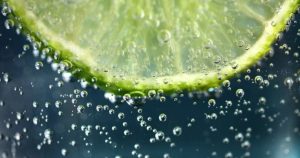March 5, 2025 from Medscape

In a video published on the Pasteur Institute website, neuroscientist Gabriel Lepousez of the Perception and Memory Unit explored a curious question: Why does our brain love bubbles?
While not focused exclusively on CO2, Lepousez’s work on olfactory sensory perception and brain-body communication offers insight into the chemistry and sensory power of sparkling drinks — a seasonal favorite during end-of-year celebrations.
Bubble Formation and Visual Appeal
Lepousez explained that bubbles in drinks like champagne form when carbon dioxide, stored under pressure, is released into a glass. About 12 liters of CO2 remain dissolved under pressure, and once released, the gas returns to its gaseous state and creates bubbles.
He noted that,
“Bubble formation is triggered by impurities on the glass surface, such as dust, microfibres, and microcracks, which serve as points of nucleation and formation of bubble columns.”
In an ultra-clean glass, no bubbles may appear at all. Bubbles animate the drink, making it seem alive and dynamic compared to still beverages.
Sound, Smell, and Sensory Stimulation
The fizzing sound of bubbles, the pop of a champagne cork, and the hiss of a soda can all contribute to the multisensory appeal of sparkling drinks. As the bubbles rise and burst, they release tiny aromatic droplets that enhance the sense of smell.
Lepousez explained that,
“Each time a bubble finishes rising and bursts on the surface of the drink, its explosion triggers the projection of micro-aerosols into the air… increasing 10-fold the vaporisation of odours in the air.”
These bursts amplify the intensity of smell — an effect that can even be observed through functional brain imaging.
CO2, Irritation, and the Mustard Receptor
CO2 doesn’t just stimulate the nose — it also activates receptors linked to pain and irritation. Specifically, it triggers the transient receptor potential ankyrin 1 (TRPA1), also known as the mustard receptor, which is expressed in the trigeminal nerve endings of the mouth and nose.
When CO2-rich solutions come into contact with these nerves, they send signals to the brain that produce a sharp, tingling sensation. This reaction helps explain the slight “sting” that comes with drinking fizzy beverages.
Texture, Taste, and the Chemistry of Refreshment
Carbonation contributes to texture as well, producing a foam that thickens the fluid between the tongue and palate. In addition, CO2 reacts chemically with taste buds to produce a mildly acidic flavor.
“Does sparkling water taste more acidic and refreshing than still water? This is due to a chemical reaction between CO2 and water on the surface of our taste buds, producing hydrogen ions that trigger a mild acidic flavour,”
Lepousez explained.
This interaction enhances the refreshing quality of sparkling drinks by stimulating the taste buds more intensely than still water.
A Sensory Journey Beyond Taste
Lepousez’s insights show that sparkling drinks engage more than our palates — they create a complex sensory experience that activates multiple brain regions. From the bubbles we see to the tingling we feel, carbonation is a full-body experience.
And for our brains, that’s a powerful reason to celebrate.
Considering an IME or document review to resolve an insurance claim, legal file, or workplace health and safety issue?
Our specialists provide evidence-based opinions, so get in touch with Western Medical today to learn more about our services.

